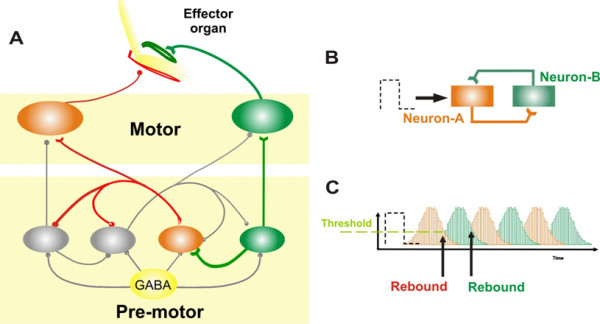Figure 1.

(A) The circuit of reciprocally innervated neurons for controlling ballistic movements. The excitatory premotor neurons send excitatory projections to the motor neurons innervating the agonist muscle group. At the same time this neuron also sends an excitatory projection to the inhibitory neuron innervating the motor neuron for the antagonist muscle group. In addition, mutual inhibitory connections exist between premotor neurons. These mutually inhibitory connections predispose the neural circuit to instability and oscillations. (B, C) Demonstration of oscillations in a two-neuron circuit. Neuron-A inhibits neuron-B and vice-versa. A small pulse to neuron-A increases its discharge and thus inhibits neuron-B. Once the discharge of the neuron drops inhibition from neuron-B is removed. This results in a rebound increase in the neuron-B firing rate. Since neuron-B also inhibits neuron-A, the same phenomenon of post-inhibitory rebound repeats for neuron-A. In the panel 'C' response of neuron A is schematized with red bars, while the green trace is response from neuron B.
